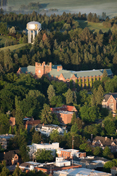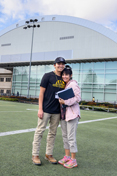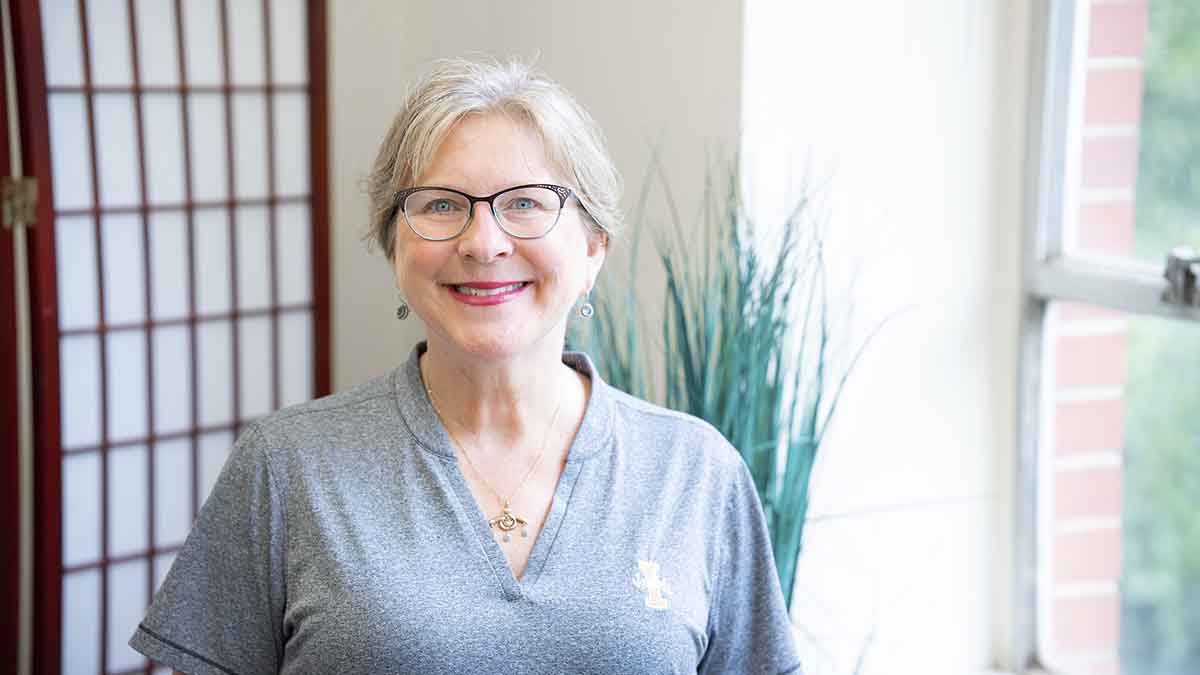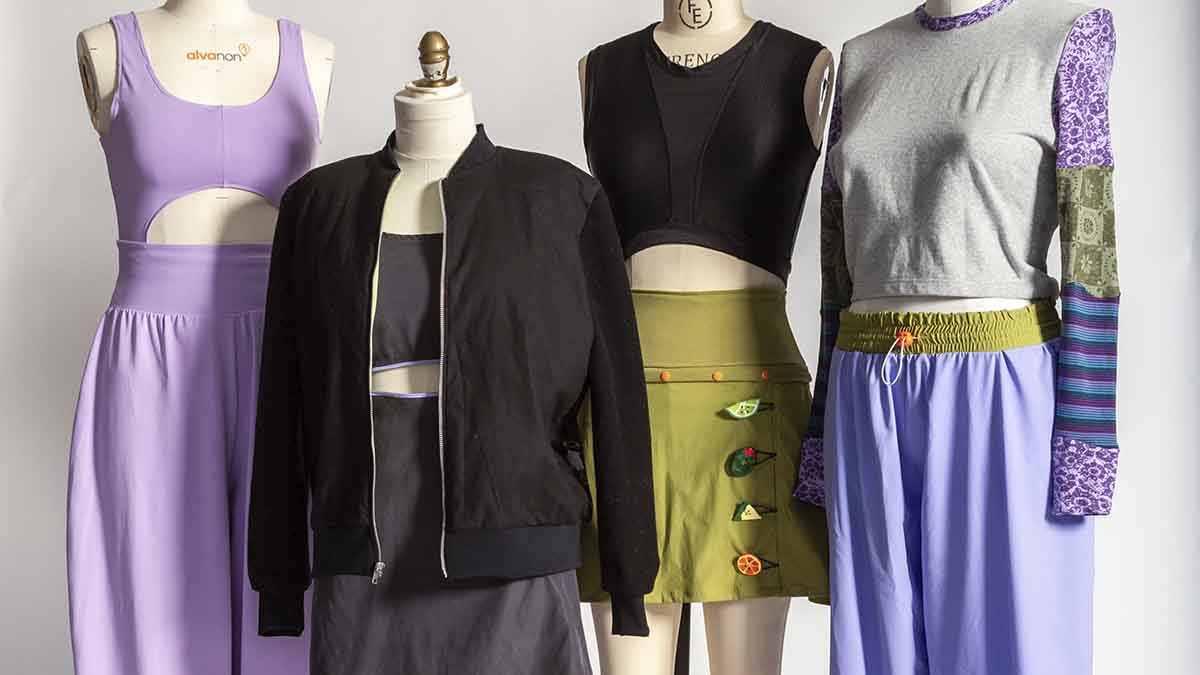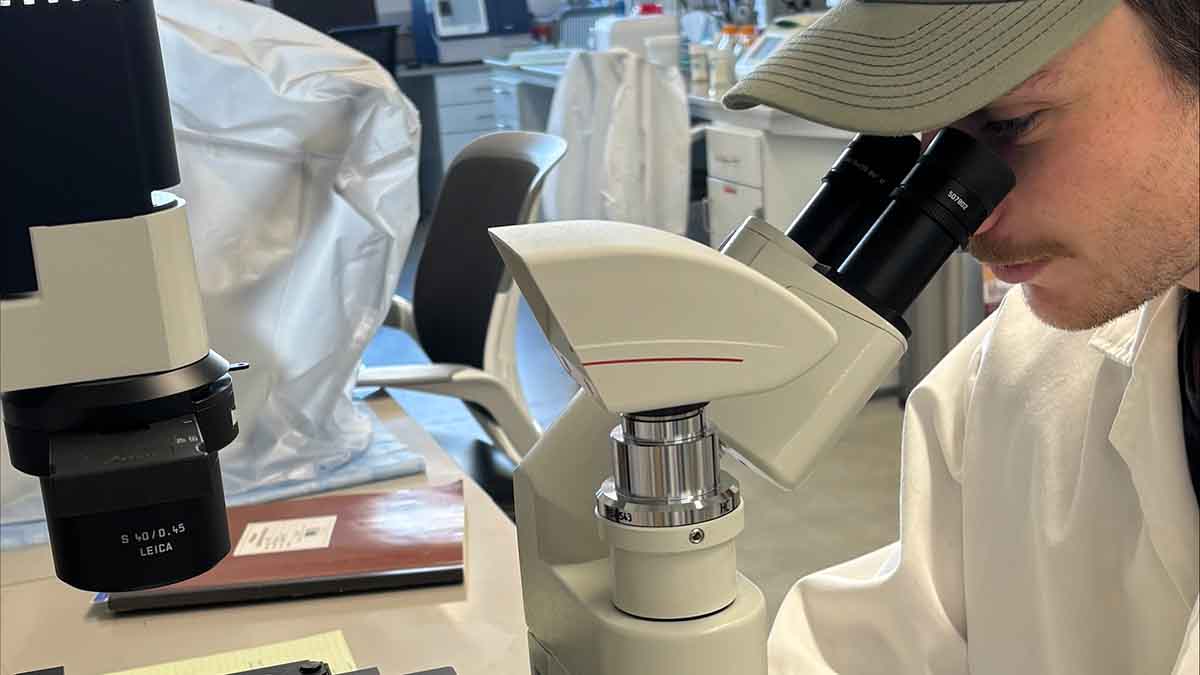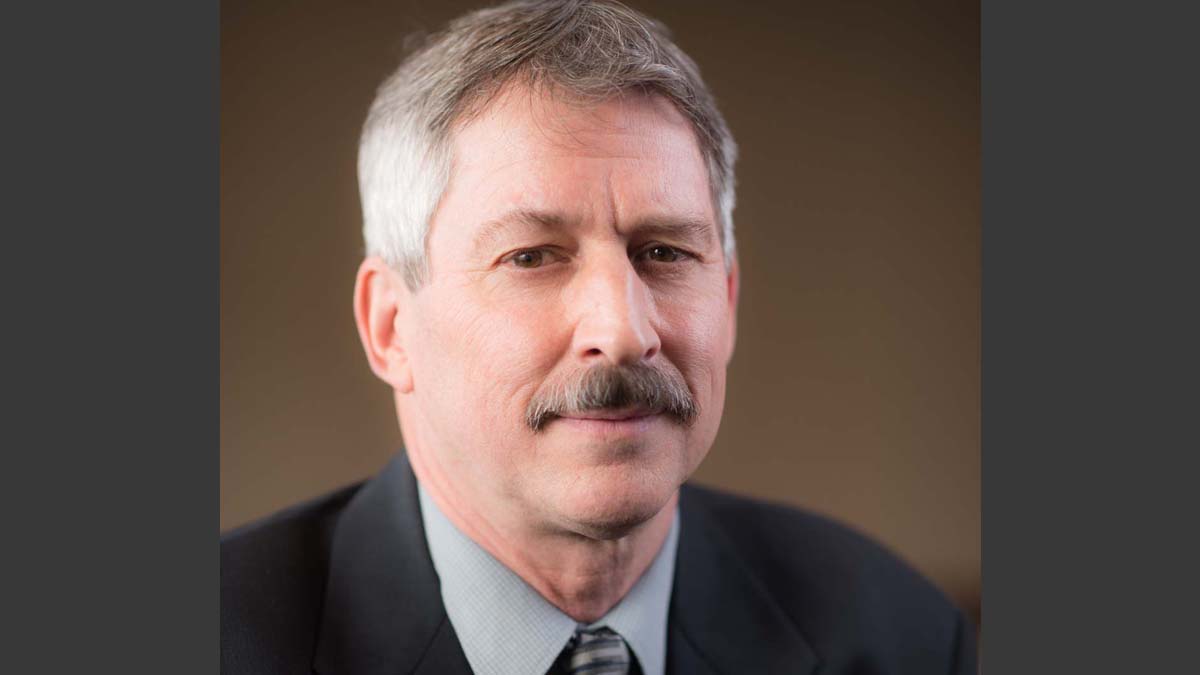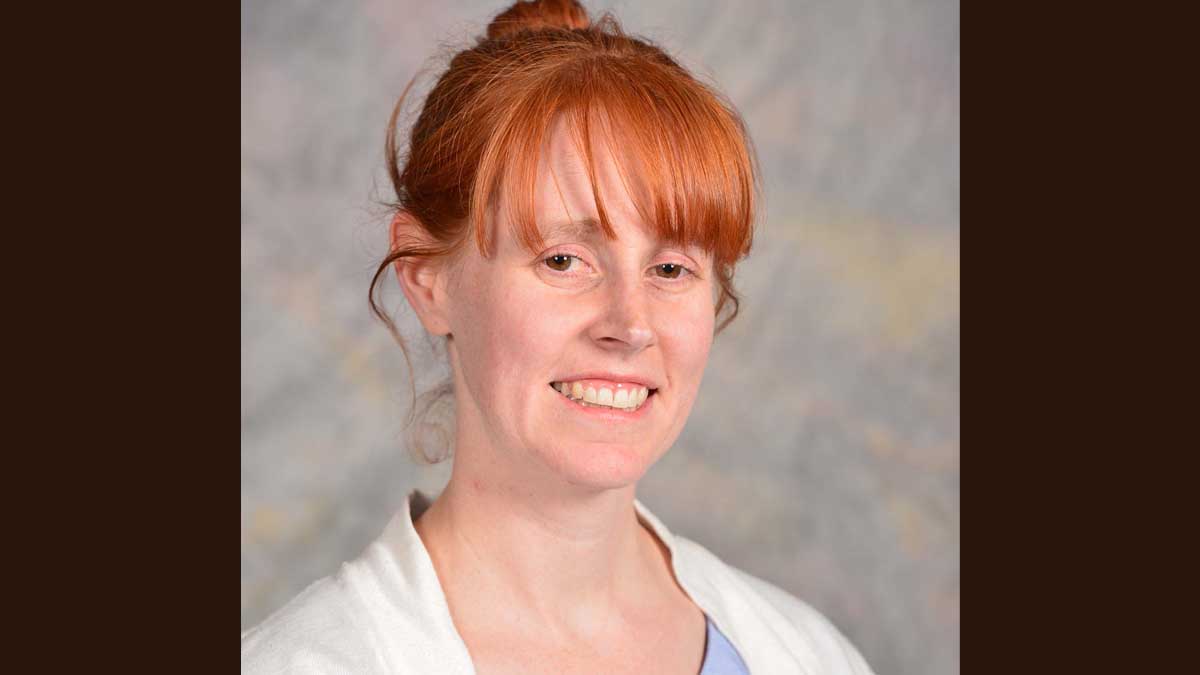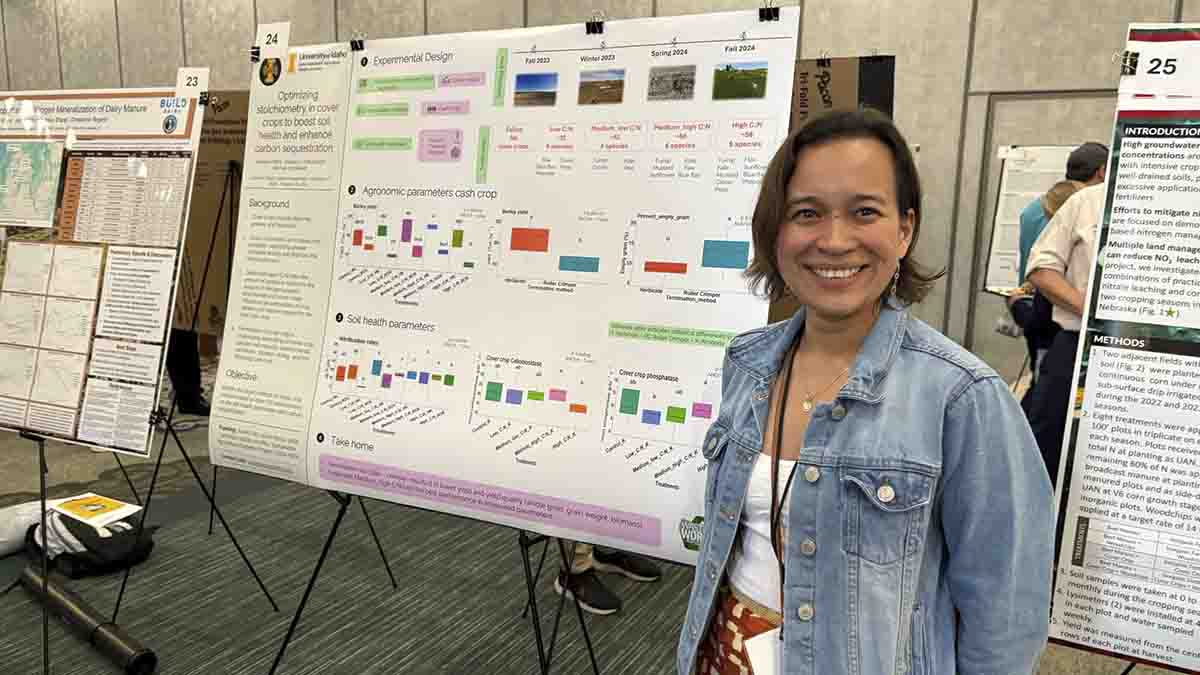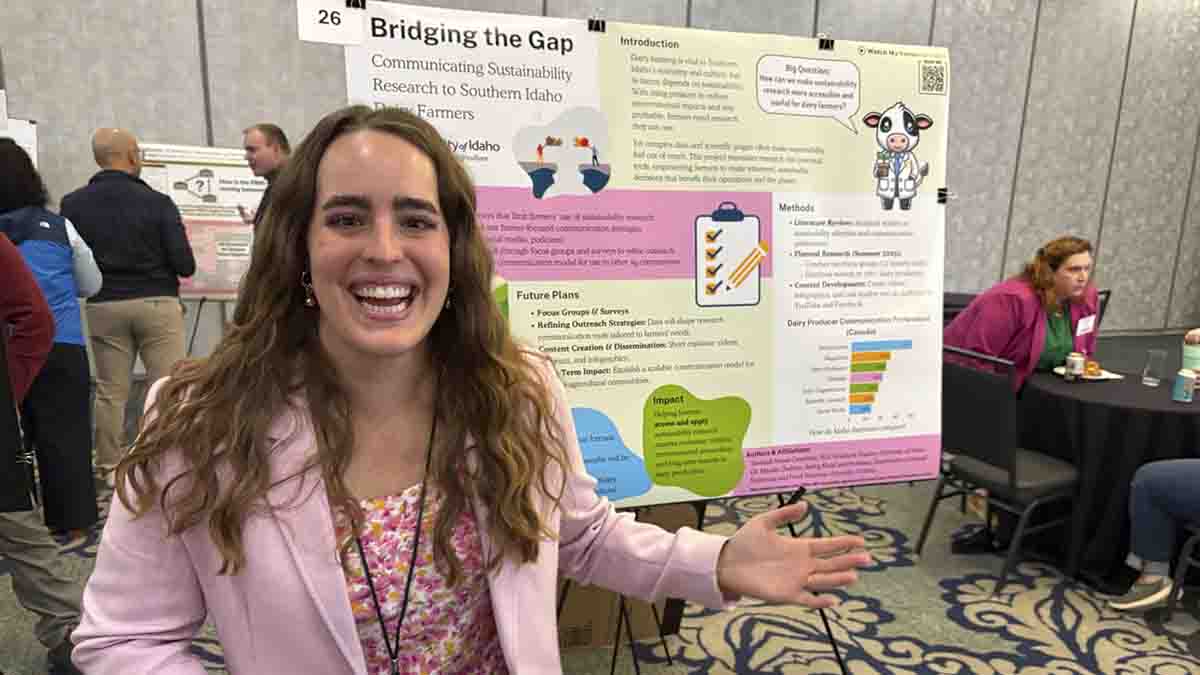Catching Up with CALS — April 16, 2025
Dean's Message — Friends Abroad
We traveled thousands of miles across the Atlantic Ocean to reach our destination in northern Spain, where we toured agricultural operations ranging in scope from a small family viticulture business to one of Europe’s largest dairies. At each stop, we learned a lot by sharing and contrasting our different approaches to food production. We were also surprised to discover an abundance of direct ties with one another and commonalities. In many ways, northern Spain felt like home. The small CALS contingent that made the trip to Spain’s Basque country March 28-April 5 included Professor Mireille Chahine, acting head of the Department of Animal, Veterinary and Food Sciences; Bob Haggerty, director of international programs; and Matt Powell, interim associate dean of research and director of the Idaho Agricultural Experiment Station.
We have a long-standing relationship with an accomplished agricultural institution in the region — the Public University of Navarre (UPNA) — that involves student exchanges and scholarly collaborations among faculty. UPNA was integral in helping with logistics for our visit, and the primary goal of my participation was to demonstrate how much we value our partnership with them. Farming conditions in northern Spain and Idaho are alike, as both areas are mountainous, with rain-fed production in the north and irrigated agriculture further south. Those geographic and climactic similarities set the stage for professors within our Department of Soil and Water Systems, Erin Brooks and Dan Strawn, to visit UPNA and cooperate in research efforts. CALS meat science faculty members Michael Colle and Phil Bass have published papers that also list a UPNA meat scientist as an author. Furthermore, Mike Thornton, who recently retired as a professor of plant sciences, took a sabbatical in the region to partner on potato research, working in tandem with scientists from the Basque country’s equivalent of our USDA’s Agricultural Research Service.
We experienced a small-world moment at the very start of our trip — while we were transferring flights in Amsterdam — that set the tenor of things to come. A high school teacher and her student, who were headed to study-abroad in Hungary, noticed the University of Idaho logo on Chahine’s shirt and asked if we were from Idaho. The teacher was a U of I alumna. The student explained she’s a senior at Teton High School in Driggs and is enrolling at U of I next fall, with plans to become an entomologist. I was delighted to introduce myself as the current dean of the girl’s future college and to tell her that entomology is also my field. The future is bright, indeed.
Upon our arrival in northern Spain, we found ourselves standing by the very river where celebrated author Ernest Hemingway regularly fished. Hemingway, whose writings popularized the running of the bulls in Pamplona, Spain, spent the final years of his life in a place with comparable natural wonders — Idaho’s Wood River Valley. Also reminiscent of Pamplona and the broader Navarre province, Idaho has a strong Basque influence. In Boise, a Basque Museum and Cultural Center commemorates the arrival of Basques to Idaho, where they pursued careers in sheepherding, cattle ranching, mining and logging. The Basque people we met during our travels in Spain were very familiar with our Gem State.
Through Mireille’s connections, we had the opportunity to visit Spain’s largest dairy, which includes roughly 8,000 cows. While enrolled in graduate school in Barcelona during the mid-1990s, Chahine became acquainted with a group of veterinarians who now help manage nutrition for the dairy. As we witnessed during our tour, the Spanish dairy has nearly achieved net-zero operations, capturing emissions and converting them to natural gas, producing solar power to run facilities, making animal bedding from manure and cleaning wastewater. This was an especially relevant tour stop as CALS is planning to begin milking cows at the Idaho Center for Agriculture, Food the Environment (Idaho CAFE) in Rupert in early 2026. Idaho CAFE will include the largest research dairy in the U.S., conducting research at an industry scale to help Idaho dairymen improve efficiency and meet an aggressive industry commitment, called the Net Zero Initiative, to achieve carbon neutrality by 2050. Seeing the Spanish dairy gives us confidence that our industry’s Net Zero goals are realistic, and CAFE can lead the way toward achieving them. It’s worth noting that the Spanish veterinarians were inspired to try some of their innovative practices based on what they witnessed during a tour of large Idaho dairies, which they attended a couple of years ago at Chahine’s invitation.
South of Pamplona in the small town of Larraga, we connected with friends from our Vandal family, including a former CALS international student named Jaizkibel Garci Salvatierra, whose family raises grapevine rootstock for sale to commercial vineyards. The vineyards graft European grape varieties to American rootstock for improved resistance against grape phylloxera. We also had the pleasure of visiting with Salvatierra’s boyfriend, Riley Kienbaum, whom she met during her semester of studying at U of I. Kienbaum now splits time between the Pacific Northwest and northern Spain and when in Idaho, he manages the fossil bed/race track in Clarkia.
It's no mere coincidence that CALS boasts such strong connections from so far and wide. Haggerty, many of our faculty and other leaders within our college have forged these relationships and built trust over several years. Now we count friends from throughout the world, and when we face challenges, support can come from many places.

Michael P. Parrella
Dean
College of Agricultural and Life Sciences
By the Numbers
The College of Agricultural and Life Sciences had a strong showing during Vandal Giving Day. Donors contributed $39,453 to support student success, $29,305 to support construction of the Meat Science and Innovation Center Honoring Ron Richard and $5,400 to support University of Idaho Extension 4-H Youth Development. The university brought in $1.28 million in Vandal Giving Day donations, beating the previous record set last year by nearly $153,000. Donations pushed the total raised for U of I’s Brave. Bold. Unstoppable. Philanthropic campaign past its original goal of $500 million.
Our Stories

ASN Fellow
Becoming a distinguished fellow with the American Society of Nutrition (ASN) will be especially meaningful to University of Idaho Professor Shelley McGuire because she’ll be following in the footsteps of her mentor, the late Mary Frances Picciano.
McGuire, director of the Margaret Ritchie School of Family and Consumer Sciences (FCS) and a leading scholar of maternal and infant nutrition, will receive ASN’s highest honor June 1 during the society’s Nutrition 2025 meeting in Orlando, Florida.
At Picciano’s urging, McGuire joined ASN in 1988 as a master’s student studying nutrition at the University of Illinois in Urbana-Champaign. Picciano, who died in 2010, was also an ASN fellow and a past ASN president. Like her mentor, McGuire went on to be active in ASN, serving on most of its committees and holding many leadership positions.
“This means so much to me because these are the people I have looked up to for my entire career,” McGuire said. “This is the premier nutrition society in the world — there’s no question about it. They publish the top journals, and anything I could do for that society over the years I did out of a servant’s heart because they’ve been in existence for a very long time and they’re as good as it gets.”
As an undergraduate, McGuire planned to pursue a career as a doctor and had already accepted a medical school seat when she took an introductory nutrition class, taught by Picciano, during the final semester of her senior year.
“It was like a lightbulb came on. I fell in love with it,” McGuire recalled.
Picciano, who also specialized in lactation and maternal and infant health, hired McGuire to work in her laboratory during the summer. McGuire decided to pursue research rather than medicine and went on to earn a master’s in nutrition from Illinois and a doctorate in nutrition from Cornell University.
“It’s so interesting because Mary Frances was also a nutrition textbook writer and I have become one as well,” McGuire said. “It’s just amazing how you follow in these giants’ footsteps without even realizing what you’re doing, and this society means that to me.”
For the past three decades, McGuire has built upon her mentor’s legacy, making monumental discoveries in human milk, lactation and infant nutrition. She’s worked consistently with the same research team — also including her husband, University Distinguished Professor Mark McGuire, with the Department of Animal, Veterinary and Food Sciences (AVFS), and Janet Williams, a senior research scientist within AVFS.
“Hopefully, they will also become distinguished fellows because that would only be fair,” McGuire said.
In 2011, the team published a paper providing the first evidence that human milk has a microbiome — harboring communities of microorganisms that colonize infants’ gastrointestinal tract and contribute to important health outcomes. Prior to that paper, human milk was believed to be sterile. Skeptics of their findings argued their milk samples must have been contaminated.
“That was a paradigm shift for the whole field of nutrition,” McGuire said. “Now, it’s a whole field upon itself. Every year, there are another 200 to 300 papers that come out.”
The team has continued research into understanding variation in the milk microbiome, as well as effects on infant health.
They made another crucial discovery amid the COVID-19 pandemic, when women throughout the world were hesitant to breastfeed their children based upon concerns about transmitting the disease. The team found COVID-19 isn’t spread through human milk, and breastfeeding poses virtually no risk. Rather, they confirmed breastfeeding protects infants from COVID-19, as milk contains antibodies.
“That might be the most important work we ever do because it was a crisis and it allowed breastfeeding women to continue to breastfeed without being worried,” McGuire said.
The team is now participating in collaborative research on how maternal cannabis use affects breastfeeding infants.
The FCS program McGuire oversees also makes significant contributions to the field of nutrition, teaching roughly 60 food and nutrition students, providing nutrition outreach through a pair of Extension specialists and conducting nutrition research. The school’s nutrition research efforts have been furthered by an $11 million National Institutes of Health Center of Biomedical Research Excellence (COBRE) grant McGuire received to create a research center devoted to women’s health and nutrition.
In the fall of 2022, McGuire also became Idaho’s first inductee into the vaunted National Academy of Medicine. As a member of that organization, McGuire was selected to serve on a committee of experts that reviewed scientific literature to guide updates on the consumption of alcohol for the Dietary Guidelines for Americans. She reviewed literature pertaining to how alcohol consumption by breastfeeding mothers may affect their infants.

Showcasing Fashion
Andrea Kleffner salvaged a deteriorating, British dress dating back to the reign of King Edward VII and remade it into contemporary and comfortable clothing.
Kleffner, of Kuna, is among nine student designers, under the guidance of Assistant Professor Lori Wahl, who will display their Apparel, Textiles and Design (ATD) Senior Design capstone projects at the Moscow Chamber of Commerce and Visitors Center, 411 S. Main St., from April 28 through May 9. A public closing reception is scheduled for 5-7 p.m. May 9 at the chamber office.
The capstone project challenges seniors to integrate knowledge and techniques from their ATD courses into a single apparel collection consisting of four different looks. Students are required to incorporate sustainable aspects into their collections, such minimizing waste, considering circular lifecycle solutions or careful selection of materials. The project's intent is to showcase ATD program knowledge in combination with individual interests as students design, develop and produce their collections.
The dress Kleffner used for her project was a popular style in the United Kingdon from 1901 through 1910. Professor Sonya Meyer, collections manager of the Leila Old Historic Costume Collection, informed Kleffner that the dress was deteriorating due to age and overcrowded storage conditions and was no longer useable for collection purposes. Kleffner was delighted by the opportunity to keep the dress out of a landfill.
Other designers and their projects featured in the showcase include:
- Kaitlyn Weak, Eagle — A women’s paddleboard swim line
- Neida Romo, Wendell — A modular clothing system designed to be worn in several ways
- Paige Householder, Newbury Park, California — Clothing with a retro aesthetic fit for hiking and camping
- Shelby Davis, Moscow — Rugged clothing made from recycled denim
- Vivian Kuhner, Prescott, Arizona — A western-themed 1990s streetwear collection, including adaptive jeans that can be opened from the side with magnets
- Bella Hammerle, Moscow — Clothing designed to bring comfort and confidence to those who struggle with dexterity or are recovering from a medical procedure
- Anthony Gonzalez, Roberts — Sophisticated all-day garments that allow the modern man to “bike to work, power through the day and transition into evening with style”
- Audrey Hawes, Seattle — Clothing made with alternative down filling
New for this year’s senior apparel design showcase, each student was paired with an industry sponsor, such as Optitex, Northwest River Supply and Cotopaxi. Sponsors each drafted a brief containing a design challenge impacting the apparel industry today and provided mentorship and guidance during the course.
“Working with sponsors has allowed the students to show off their design problem-solving skills as they tackle some very real issues with modern apparel while producing creative projects that reflect their individuality,” Wahl said. “I am very grateful for the time, knowledge and experience our industry sponsors gave to the students.”
A few sponsors also provided textiles for students to use. Cotopaxi, for example, sent boxes of textile swatches to Paige Householder and challenged her to make garments from them.
“I intentionally designed each garment in a way that can be worn at the campsite, on the trails or around town,” Householder wrote in a designer statement about her project. “Each look has a detachable, reusable bag thoughtfully designed into the look for the wearer’s convenience.”

Supporting Undergraduate Research
As a University of Idaho undergraduate, Logan Mann got to present his own agricultural research at a scientific conference last summer, trading notes with industry officials, graduate students and faculty from several institutions.
Mann — a junior from Littleton, Colorado, who is double majoring in environmental soil science and chemistry — had the opportunity to participate in the 63rd Annual Society of Nematologists Conference in Park City, Utah, thanks to an $800 travel grant he received through the university’s Office of Undergraduate Research (OUR).
OUR provides financial assistance for undergraduates undertaking research projects and for students traveling to present their results at conferences.
At the nematology conference, Mann presented a poster about his research into the effects of soil pH on a devastating, quarantined pest of potatoes, called the pale cyst nematode (PCN), fielding questions from some of the top minds in nematology.
One of the people Mann met at the conference was a representative of Corteva Agriscience who helped him land a summer internship with the company. Mann also visited with graduate students from other universities who conducted similar research into how certain soil characteristics affect various plant parasitic nematodes.
“They would ask me, ‘Oh, what did you do for this?’ or say, ‘I like how you did that,’ and I’d ask, ‘Oh, how did you do this?’ or, ‘What have you found?’ There was definitely some curiosity,” Mann said.
Near the end of the first semester of his freshman year, Mann accepted a job working 10 to 15 hours per week as a research assistant under Louise-Marie Dandurand, a professor within the Department of Entomology, Plant Pathology and Nematology (EPPN) who has directed Idaho’s PCN project since 2011. Mann still works in the lab, where he assists with upkeep, mixing soil samples and otherwise assisting graduate students.
Found in most potato growing areas in the word, PCN can cause potato yield losses of up to 80% if left unchecked. In Idaho, the PCN infestation is found on approximately 1% of potato growing land and has been contained within an 8.5-mile radius spanning portions of northern Bingham and southern Bonneville counties. Mann has also gotten to spend many of his laboratory hours working on his personal research.
In the fall of his sophomore year, Mann submitted a proposal that resulted in him securing a $7,000 stipend toward his PCN project from an undergraduate research funding program available through U of I’s Institute for Health in the Human Ecosystem (IHHE). Last summer, he received a second IHHE grant toward his research for $1,000.
Mann came up with the concept for the project, and Dandurand and one of her doctoral students, Paige Hickman — who is now a postdoctoral fellow — offered assistance and mentorship.
“Paige and Logan worked together closely. Overall, I think it was a good experience for her and a great experience for him,” Dandurand said. “Logan is so motivated. He thinks things through really well, he has great ideas and he’s passionate about research, and soils especially.”
Mann’s project entailed planting Russet Burbank potatoes in a greenhouse in pots with PCN-infested soils ranging in pH from 5.5 to 8.5. He collected data six weeks and 12 weeks after planting, evaluating tuber sizes, PCN reproduction, cyst hatching rates and different life stages of the nematode. His results may suggest a soil pH of 6.5 to 7.5 is optimal for PCN hatching.
Dandurand hypothesizes that soil calcium, which aids in hatching, becomes more soluble in that pH range.
“I think what we need to do to determine this conclusively is to do the experiment one more time, which we may end up doing,” Dandurand said.
Mann also found that a much larger percentage of PCN differentiated to being male at a pH of about 7.5.
Mann has been invited to present his PCN research, along with other U of I undergraduates who have received OUR grants, during the U of I Undergraduate Research Symposium from 2:30-4:30 p.m. April 21 in Memorial Gym. He also presented the project on April 7 during the IHHE Annual Research Symposium, hosted at the Idaho Student Union Building.
Mann plans to work in the agricultural sector for a few years before enrolling in graduate school after graduating with his bachelor’s degrees.
“I think I will get a master’s degree, and this project has helped me to determine that,” Mann said. “It was a good way for me to figure out, ‘Hey, do I like research?’”
Faces and Places
Pat Momont, Extension southern district director, retires from UI Extension on April 30 after 35 years of service. He joined U of I as an Extension beef specialist in 1990. In 2001 he became an Extension district director and in 2005 he also became superintendent of the Caldwell Research and Extension Center. As a district director, Momont oversees nine UI Extension county offices.
Julia Piaskowski, director of statistical programs, will be offering statistical consultations, advise on statistical analysis, suggestions on experimental designs and help with other research-related topics to faculty, staff and graduate students May 6-8 at the university’s research and Extension centers in Caldwell, Parma, Twin Falls, Kimberly and Aberdeen. May 6 visits are scheduled for 9 a.m. to noon in Parma and 1:30 p.m. to 4 p.m. in Caldwell. May 7 visits are scheduled for 9 a.m. to noon in Twin Falls and 1:30-4 p.m. in Kimberly. May 8 visits are scheduled for 9 a.m. to noon in Aberdeen. Email jpiaskowski@uidaho.edu to schedule a time.
Anthony Gonzales and Andrea Kleffner, both seniors within the Margaret Ritchie School of Family and Consumer Sciences studying apparel, textiles and design, recently led and organized a fashion show component to this year’s Etiquette Dinner in conjunction with Career Services. Kleffner and Gonzales are interns for Career Services and saw the opportunity to merge their expertise with their internship.
Rita Franco, a doctoral student studying nutritional sciences, has been selected by the Athena Awards Committee as the 2025 Athena Student Excellence Award recipient. She was nominated for the award by her advisor, Ginny Lane, an assistant professor within the Margaret Ritchie School of Family and Consumer Sciences. Franco and other recipients will receive their awards during a ceremony scheduled for 5-7 p.m. April 23 in the Great Room of the 1912 Center in Moscow.
Ten University of Idaho graduate students and postdoctoral researchers involved in the Idaho Sustainable Agriculture Initiative for Dairy (ISAID) grant presented posters about their dairy-related research projects during the Waste to Worth Conference, hosted April 7-11 at the Grove Hotel in Boise.
Seven of the ISAID students are enrolled in CALS. Vanessa Otero-Jimenez, with the Department of Soil and Water Systems (SWS), presented her research on optimizing stoichiometry in cover crops to boost soil health and enhance carbon sequestration. Sunita Bandane Pahari, with the Department of Agricultural Economics and Rural Sociology (AERS), presented research assessing consumers’ willingness to pay more for biochar-based products. Biochar is a charcoal-like substance made by heating organic matter at a high temperature. Sanket Parajuli, with AERS, presented research on the marketability of biodegradable pots made from animal waste feedstock. Galen Richards, with SWS, presented research on impacts of crop and nutrient management practices on long-term water quality and quantity in a dairy-intensive, irrigated agricultural region using the SWAT (soil and water assessment tool) model. SWAT is commonly applied to agricultural regions to assess the export of nutrients, sediment and water, using topography, soils and weather data to build subbasins with unique characteristics. Ashish Kumar Das, who is a SWS student within CALS and is studying environmental science within the College of Natural Resources, presented his research electrochemical treatments for degrading ammonia in dairy wastewater. Melissa Renfrow, with the Department of Agricultural Education, Leadership and Communication (AELC), presented about piloted dairy curriculum taught in an introduction to agriculture classroom in rural Idaho, with the goal of improving and refining the technical content prior to wide dissemination. Savanah Nunes Carpenter, with AELC, presented a poster on how to make sustainability research more accessible and useful for dairy farmers.
Three ISAID students who presented posters are enrolled in other colleges. Kallol Naha, in computer science, presented research on a machine learning-based framework for nitrogen prediction and manure classification, called EcoManure. Brandon Boyd, in civil engineering, presented research about his work to create artificial intelligence software that can be trained to starve and feed bacteria used to turn manure into biodegradable plastic. Imram Hussain Mahdy, with the Department of Chemical and Biological Engineering within the College of Engineering, presented research on converting diary manure with high water content into hydrochar, which is a solid product with high carbon and nutrient content for use as a soil amendment and for carbon sequestration. About 150 people attended the conference, and 35 students representing several universities from throughout the country presented research. ISAID, which hosted the conference, gave awards for the best poster (Otero-Jiminez) and the most creative poster (Nunes Carpenter). ISAID is funded with a $10 million grant from the U.S. Department of Agriculture’s National Institute of Food and Agriculture and involves 78 U of I faculty, Extension educators and students, with the goal of converting excess nutrients from dairy production into valuable bioproducts including commercial fertilizers and bioplastics. The Livestock and Poultry Environmental Learning Community (LPELC), which is a network of professionals from the U.S. and Canada involved in animal agriculture and environmental stewardship, hosts the conference every few years in a different region.






Events
- April 16 — 2024-2025 Heritage Orchard Conference, Online
- April 17 — Pressure Canning Made Easy, Online
- April 19 — 10 Acres and a Dream, Sandpoint
- April 29 — Our Gem Speaker Series: Water Smart Programming, Online
- April 30 — CALS Awards Banquet, Moscow
- May 5-9 — Food for Finals, Moscow
- May 10 — Commencement Reception, Moscow
- May 15 — Jerky Making 101, Online


